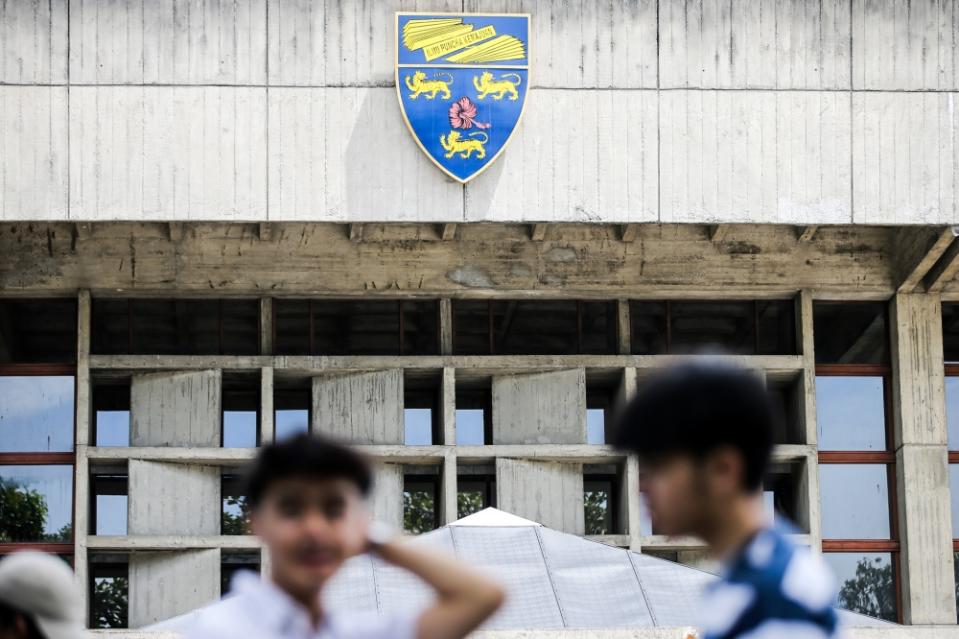Ringgit’s decline sparks financial strain for Malaysian students pursuing foreign programmes

KUALA LUMPUR, Nov 29 — In the corridors of higher education, the impact of currency fluctuations is leaving an indelible mark on the dreams of many Malaysian students pursuing studies abroad.
With the ringgit’s recent downward spiral, students like Kaushna Rajendran and Zarith Sofea Ann Abdullah say they are grappling with the reality of increased education costs and the challenges that come with it.
Kaushna, a 23-year-old law student at BAC University in her final year at the University of Hertfordshire, United Kingdom, said that the increase in fees for her twinning programme have increased notably since her initial inquiry in 2019.
“I remember when I first inquired about the twinning programme back in 2019 at BAC, the prices were definitely lower than what they are now.
“Even when my brother did his twinning programme three years ago for the same course, and it was way more affordable back then. It’s surprising to see how much the fees have risen in just a few years,” she told Malay Mail.
She also said that with ringgit’s depreciation, the costs of education have surged, adding pressure on her parents.
“Now, my parents have to fork out more money for me to pursue the same programme. It’s not easy, especially with the current economic conditions and the currency depreciation,” she added, underscoring the broader economic challenges impacting families.
Echoing the sentiment, Zarith said the financial strain goes beyond tuition fees.
“Everything seems more expensive from accommodation, and books to daily expenses. It’s making me reconsider some aspects of pursuing this twinning programme,” expressed the 22-year-old from Taylor’s University, currently in her second year of business management at Queen’s University Belfast, United Kingdom.
In a bid to cushion the financial impact, Zarith has taken up part-time work, a challenging juggling act with her academic responsibilities.
“We need the education, but the costs and the time commitments are making it incredibly challenging. That’s why I have taken up a part-time job at my university as well,” she confessed.
The uncertain economic climate has also cast a shadow over her future plans.
“Initially, I was planning to do my master’s programme here, but with the economic uncertainties, it feels like we are constantly on edge about how much more the fees might increase in the future. It’s hard to plan for the long term,” Zarith said.
The effects of currency depreciation on education costs is not just a financial matter but a crossroads where dreams and economic realities intersect.

According to recent research conducted by Wise, a UK-based foreign exchange financial service, Malaysians studying abroad face an annual overpayment of approximately RM69.9 million in total transfer fees. — Picture by Farhan Yusoff
According to recent research conducted by Wise, a UK-based foreign exchange financial service, Malaysians studying abroad face an annual overpayment of approximately RM69.9 million in total transfer fees.
The study, encompassing nearly 60,000 Malaysian students studying overseas, indicated an average annual loss of RM1,183 per student due to transfer-related fees.
The research by the global technology company also highlighted that international students globally experience an annual overpayment of around RM5.3 billion in hidden transfer fees when moving money across borders.
The study revealed that Malaysian students invest the most in education in the United States (US), averaging RM130,470 per year, surpassing the global average.
Australia and the United Kingdom, both among the top five education destinations for Malaysian students, were also identified as expensive countries to study in, with annual costs ranging between RM65,665 and RM77,221, according to Wise’s internal data.
Private higher education institutions are also grappling with increased operating costs, prompting a cascade of effects on students, institutions, and the education sector as a whole.
Speaking to Malay Mail, National Association of Private Educational Institutions (Napei) secretary general Teh Choon Jin said the depreciation of the ringgit has led to a notable decline in students pursuing education abroad, affecting their plans due to increased costs.
“There has been a supply and demand paradigm shift in terms of outbound where fewer students are opting to go overseas because parents have to pay more due to depreciation of our currency and their plan for overseas education is becoming unaffordable.
“Many who have planned to go overseas are now opting to stay in Malaysia for their higher education,” he said.
He said in contrast, there has been a surge in international students enrolling in Malaysian higher educational institutions, attracted by the perceived affordability, partly attributed to the depreciating value of the ringgit.
He also said that for students enrolled in twinning programmes in Malaysia, fees remain in ringgit, but when they go abroad to complete their programmes, they are required to pay in the host country’s currency, leading to increased financial strain.
Similarly, students undertaking external programmes with fees denominated in foreign currencies, such as the British pound, find themselves paying more due to the weakened ringgit.

The depreciation of the ringgit is causing inflationary pressures for families in the low to mid M40 income brackets, diminishing their disposable income. As a result, families are exploring alternative pathways for higher education, including considering public universities, institutions with lower fees, or entering the job market directly. — Picture by Ahmad Zamzahuri
He also highlighted the growing operating costs faced by private higher education institutions in Malaysia, driven by the constant upgrading of equipment, software, and hardware.
Choon Jin said the majority of these expenses are incurred in foreign currency, particularly the US dollar, leading to an increase in operating costs exacerbated by the depreciating value of the ringgit.
“The depreciation of the ringgit is causing inflationary pressures for families in the low to mid M40 income brackets, diminishing their disposable income.
“As a result, families are exploring alternative pathways for higher education, including considering public universities, institutions with lower fees, or entering the job market directly,” he added.
Recognising these challenges, the Napei emphasised the need for enhanced government assistance to enable access to higher education for families within the low to mid-M40 income brackets.
However, Choon Jin said the decision to revise tuition fees is a multifaceted process that involves various factors, extending beyond mere fluctuations in currency values.
“Private higher educational institutions must undertake a comprehensive review of their fee structures to ensure both sustainability and accessibility of education. Relying solely on currency values is insufficient; therefore, a holistic approach is necessary,” he said.
To address the challenges posed by currency depreciation, he said private higher education institutions are collaborating with foreign universities in the Asia region to provide affordable exchange programmes and study abroad opportunities.
“Under such agreements, students make tuition fee payments to their respective home universities for the exchange programmes. Incidental expenses, such as travel, accommodation and living costs, become the primary financial responsibility for the students.
“In addition to physical exchange programmes, private higher education institutions are adapting to the current circumstances by incorporating virtual international experiences. This virtual mobility programme became particularly prominent during the pandemic when travel restrictions were in place. This alternative allows students to engage in cross-cultural experiences without the need for physical travel,” he said.
He added that some private higher education institutions are offering shorter-duration study abroad options.
“For instance, programmes designed to align with summer holidays in overseas universities for Malaysian students to study abroad programme provide a more manageable timeframe and cost for participation.
“These initiatives are strategically implemented to ease the financial burden associated with currency depreciation, ensuring that Malaysian students can still benefit from valuable international educational experiences,” he said.
The ringgit ended trading yesterday at 4.67 against the US dollar.



